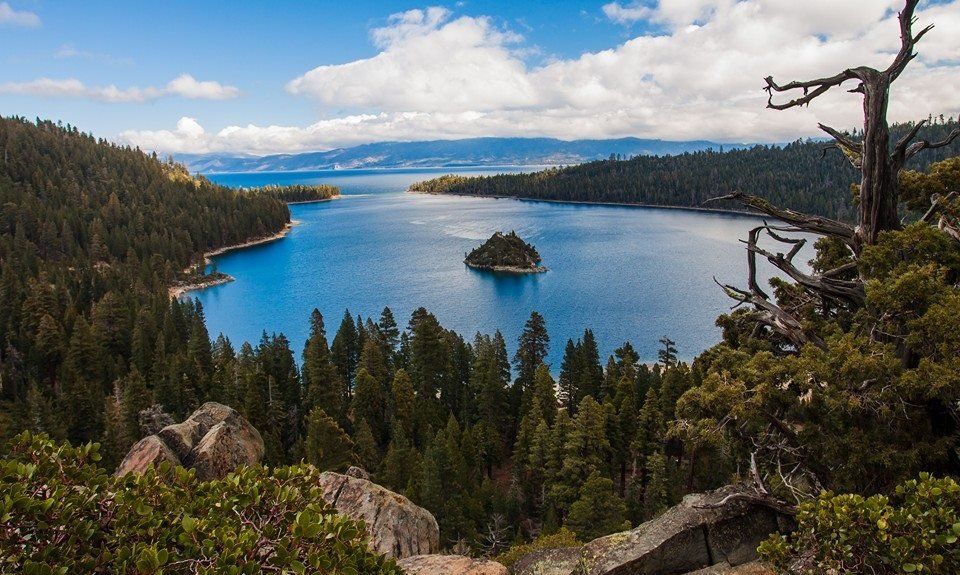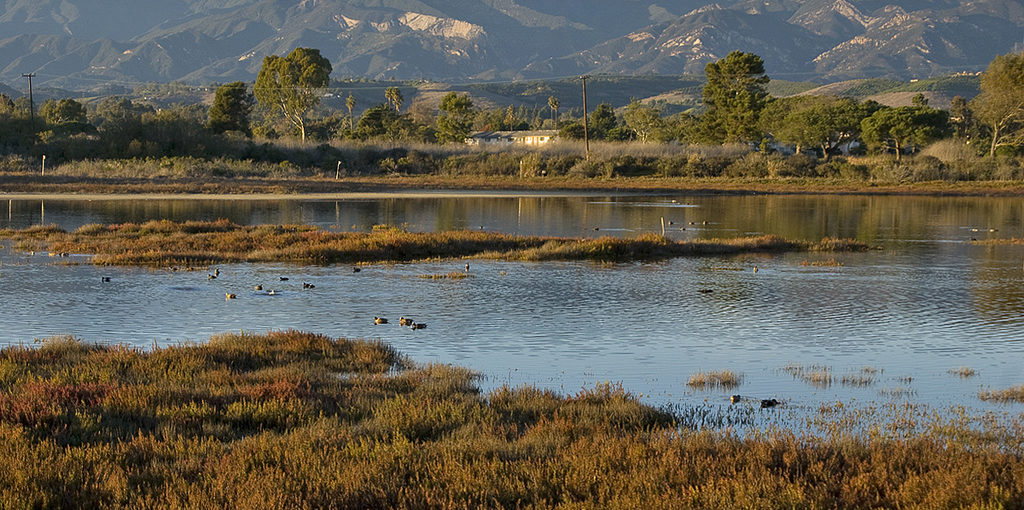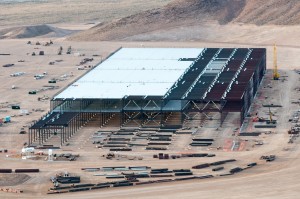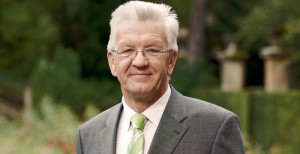California has a paradoxical history with its environment. On one hand, the state boasts incredible natural beauty, along with a government that is an internationally recognized leader for strong environmental policies. But the state’s residents have also caused severe environmental destruction, particularly in the late nineteenth century — some of which helped spur the mobilization that led to these environmental successes.
Looking at California’s history, what were some of the most striking examples of environmental destruction? To qualify for this “Top 10” list, the destruction had to be irreparable (at least in anyone’s lifetime) and of a uniquely beautiful environmental feature (landscapes and plants). Of note, animals are not included, nor is an assessment of the economic trade-offs or alternatives.
10. Quarrying Morro Rock
Morro Rock is California’s Gibraltar, a striking coastal feature just north of San Luis Obispo on Morro Bay. It’s a remnant, exposed rocky volcano, visible from miles away. The local Chumash tribe consider it a sacred site (named Lisamu) and have special access to the top for religious ceremonies. But half of the side of the rock was quarried from 1889 to 1969 to form the bay breakwater, leaving a massive scar.
9. Draining the Owens Valley and Mono Lake

The Owens Valley is a remarkable north-south valley created by fault separation along the eastern Sierra Nevada mountains. Just past the northern end of the valley lies Mono Lake, an ancient salt-water body of water. In the early 1900s, Los Angeles city leaders surreptitiously purchased land and water rights to direct the Owens river, and eventually the streams supplying Mono Lake, into aqueducts to service Los Angeles real estate development. The result was a shrunken Mono Lake and desiccated Owens river valley and lakebed, creating toxic duststorms and economic and environmental blight in the region.
8. Channelizing the Sacramento-San Joaquin Bay Delta

The Delta sits between California’s Central Valley and San Francisco Bay, draining most of the water from the interior of the state to the Pacific Ocean. It is one of the largest estuaries in western North America, once featuring a vibrant ecosystem with rich soil. Chinese laborers were employed to build levees between the 1850s and 1870s to dam and farm the land. Today, these levees are at constant risk of collapse, jeopardizing much of the state’s water transfer system from north to south, while much of the Delta ecosystem is in a state of freefall.
7. Clear-Cutting the Sierra and Lake Tahoe Pine Forests

The Sierra Nevada mountains used to be blanketed in old growth pine forests, which included trees the size and age of giant sequoias in some cases. But in the mid- to late-nineteenth century, much of the mountains, including the entire Lake Tahoe basin, was clear cut largely to build underground silver mines in neighboring Nevada. Today, the resulting second-growth forests of clumped juvenile firs and pines creates a fire-prone jumble that forest officials are struggling to manage properly. You can still see the original old-growth pines only in places like DL Bliss State Park along Lake Tahoe, ironically preserved by one of the industrialists who profited from the logging in the first place.
6. The Los Angeles Freeway Embrace

The City of Los Angeles is ringed by semi-arid mountains, distant snow-capped peaks and a long coastline featuring wetlands, coastal bluffs and sandy beaches. Yet in the middle of the twentieth century, city and state leaders enabled the paving of much of this landscape via the construction of multiple large freeways, starting with the Arroyo Seco Parkway in Pasadena, the first freeway in the country. This automobile network induced significant traffic congestion and sprawling development that to this day generates a substantial amount of air pollution, despite efforts to retrofit the city back to a Railtown.
5. Damming Hetch Hetchy Valley

Hetch Hetchy is a rare glacial-carved valley within Yosemite National Park in the Sierra Nevada, featuring a meandering Tuolumne River and similar in scale and beauty to the more-famous Yosemite Valley to the south. San Francisco water engineers at the turn of the last century sought to dam this bathtub-shaped valley to bring mountain water to the groundwater-challenged San Francisco peninsula. Over the objections of John Muir and the Sierra Club, the federal government and San Francisco officials approved the dam, flooding and permanently marring this geologic wonder.
4. Logging Giant Sequoias

Giant sequoia trees can live up to three thousand years and grow to become the largest living things on Earth. California’s western Sierra Nevada mountains host the last remaining 77 groves on Earth. In the late 1800s, Californians chopped down about one-third of them. Worse, most of the wood from the trees would shatter on impact with the ground, so these residents could only use the wood for building fences or manufacturing shingles.
3. Wetlands Destruction

California once boasted over 4 million acres of wetlands, out of 163 million in the state, from coastal lagoons to Central Valley floodplains. These lands featured abundant bird and aquatic life, among other features. But 90 percent of them were destroyed by river damming and channelization. Today, what remains hosts 55% of the state’s endangered species, with much of those lands now irreparably lost to farms, cities and sprawl.
2. Clear-Cutting Old-Growth Coastal Redwoods

Coastal redwood trees grow to be the tallest living things on Earth and can live up to two thousand years. They are located along California’s coast up to the Oregon border. But starting in the mid-nineteenth century through the 1980s, loggers cleared 95% of the original old growth forests. Once cut, new trees may quickly grow up in a ring around the old stump but resemble toothpicks compared to the originals. To view what was lost, you can visit Muir Woods 12 miles from San Francisco, Big Basin Redwoods State Park near Santa Cruz, or Redwood National Park near the Oregon border.
1.Hydraulic gold mining

In the mid-1800s, mining companies discovered that they could harvest gold from the Sierra Nevada foothills more easily if they blasted the rock with high-pressure water. In a few short years, these companies denuded and deformed much of the Sierra foothills, sending debris into the Central Valley and mercury pollution into the San Francisco Bay, where it still sits today. A federal judge stopped this type of mining in the 1884 decision Woodruff v. North Bloomfield Gravel Mining Company, in order to protect agricultural land in the Central Valley. But much damage was permanently done to the foothills, agricultural areas of the Central Valley and San Francisco Bay water quality.
____________________________________________________________________________
There are potentially many other examples of harmful environmental decision making to choose from, which you can suggest in the comments. The one upside of many of these tragedies is that they resulted in a public backlash that inspired long-lasting environmental reform and organizations, with compounding successes to this day. Much of the destruction described here could have been far more significant without this citizen (and often business) mobilization. But still, what is lost is forevermore, a cautionary tale that should give us pause before we sacrifice any more of California’s environmental heritage.

UC Berkeley Law’s Center for Law, Energy and the Environment (CLEE) is today releasing a new report on lessons learned to advance electric vehicle (EV) deployment in France and California. Electric Vehicles and Global Urban Adoption: Policy Solutions from France and California is based on a June 2019 international conference at UC Berkeley, co-sponsored by CentraleSupélec and Florence School of Regulation (FSR) in France, featuring speakers from California and French utilities, energy regulators and industry.
Electric vehicles are important to both California and France because transportation accounts for approximately 20 percent of emissions in Europe, 30 percent in the United States, and 40 percent in California (and even more when factoring in emissions from oil refineries). Yet electric vehicles still represent a small share of the overall vehicle market worldwide, at under 10 percent of new car sales in California and under 2 percent in France, despite aggressive policy targets.
Deployment in California and France is more perhaps more complicated than other jurisdictions, given that approximately 40 percent of residents in both places live in multi-unit dwellings, such as apartments, townhouses, and condominiums. Many of these dwellings are in urban areas with little or no access to charging, given the lack of dedicated parking spots and lower vehicle ownership rates. French law requires builders of new apartment buildings to install chargers, but residents of existing buildings don’t receive those benefits.
As leaders in California and France seek to boost EV adoption, speakers at the conference identified the following challenges, also summarized in the report:
- Lack of access to affordable, convenient private electric vehicles;
- Complexity and cost of installing charging in urban settings and existing multifamily buildings;
- Declining federal incentives and insufficient vehicle demand;
- Electricity rate design decreases the financial viability of charging stations;
- Difficulty of adopting optimal charging practices that could benefit users and electric utilities;
- Difficulty of adopting optimal charging practices that could benefit users and electric utilities; and
- Need for grid infrastructure upgrades to avoid high costs on first-movers.
The conference speakers also discussed priority solutions, as the report details, including:
- National and state governments could require owners of existing multifamily buildings to install charging stations;
- National and state governments could assist transportation network companies (TNCs) like Uber and Lyft in encouraging electric vehicle adoption among their drivers, through support for the deployment of fast-charging hubs, driver education programs, and new pilot projects; and
- Electric utilities and regulators could develop new rate designs to incentivize charging while optimizing grid efficiency.
These and other solutions are discussed in the report, which will hopefully help stakeholders in both jurisdictions achieve an electric future for transportation. Bonne route!
Most electric utilities hate rooftop solar. When a customer installs solar on their roof, it means fewer sales (and therefore revenue) for the utility. It also means more unpredictable and dispersed sources of power from rooftops everywhere. As a result, many utilities across the country have been trying to kill state rooftop solar incentives for years.
 I’ve covered the battles in states like California, Hawaii and Nevada on this blog. The short of it is that California has slightly decreased their incentives for rooftop solar, in the face of declining prices and concern about utility costs; Hawaii has retrenched significantly but in turn created a new market for home batteries + solar; and Nevada brutally ended their incentives a year ago, leaving even existing solar customers without incentives that they had relied on when they bought their panels.
I’ve covered the battles in states like California, Hawaii and Nevada on this blog. The short of it is that California has slightly decreased their incentives for rooftop solar, in the face of declining prices and concern about utility costs; Hawaii has retrenched significantly but in turn created a new market for home batteries + solar; and Nevada brutally ended their incentives a year ago, leaving even existing solar customers without incentives that they had relied on when they bought their panels.
But the end of 2016 brought some significant updates for Nevada and now a new state, Arizona. First, as Greentech Media reported, Nevada regulators have restored the incentives for customers in the northern utility service territory (after having previously given into public pressure and restored the incentives for existing customers to “grandfather” them in).
But Arizona regulators have decided to jump off the rooftop solar cliff, killing existing incentives (which involve a full retail credit for every surplus kilowatt of electricity generated by the panels and not used on-site). Instead, solar customers in Arizona will be eligible for a vastly reduced and unpredictable “export rate” for any surplus electricity generated. As the Arizona Daily Star described:
The export rates will be determined in each utility rate case and will initially be based on a “resource comparison proxy” based on a weighted, five-year average cost of power from utility-scale solar farms.
The new export rates will vary by utility and be stepped down annually, in increments limited to 10 percent each year.
Solar industry advocates are already predicting that their industry will die in Arizona, as they correctly predicted would happen in Nevada after incentives were killed there, too.
Once those jobs disappear and Arizonans realize what they’ve lost, especially given that the state was otherwise one of the best-selling markets for solar with its abundant sunshine and high air conditioning bills, expect major political pushback. I wouldn’t be surprised if we see a Nevada-like reversal in the coming year or so.
In the meantime, the big winner could be battery companies like Tesla. Per Bloomberg, as the company “flipped the switch” yesterday on its gigafactory in Nevada, it will potentially have a new market to sell its product.
Why? Because if solar customers in Arizona aren’t going to get paid much for their surplus energy anymore, they’ll be interested in a cheap battery that can store that surplus and help them use all of it on-site. The battery therefore allows them to effectively recreate that full retail credit they used to get under the old system: any electricity they would have had to purchase from the utility when the panels weren’t producing or producing enough, they can now get from their battery.
So while states lurch around on their rooftop solar policies, the long-term trend seems clear: the incentives are decreasing, and cheaper batteries will be filling that void.
But at the sub-national level, certain states within Germany are pushing the envelope even more. One of those states is Baden-Württemberg, led by the Green Party minister-president Winfried Kretschmann. Together with California, these sub-national climate hawks could play a powerful role at the upcoming UN climate talks in Paris.
Minister-President Kretschmann will be speaking at UC Berkeley’s Institute of European Studies tonight at 6pm at 100 Genetics & Plant Biology Building to discuss the climate synergies with these two subnational leaders.
In his lecture, he promises to make a “special announcement in the field of renewable energy and climate policy that will also affect California.” Let’s hope it’s something that will push the global community into action, instead of the wheel-spinning we’ve seen to date.
On Sunday I was interviewed on KCBS News Radio in San Francisco about how California can better spend its transportation dollars. It’s the subject of the new UC Berkeley / UCLA Law report Moving Dollars. I posted the audio, which you can listen to here:
Audio Player




